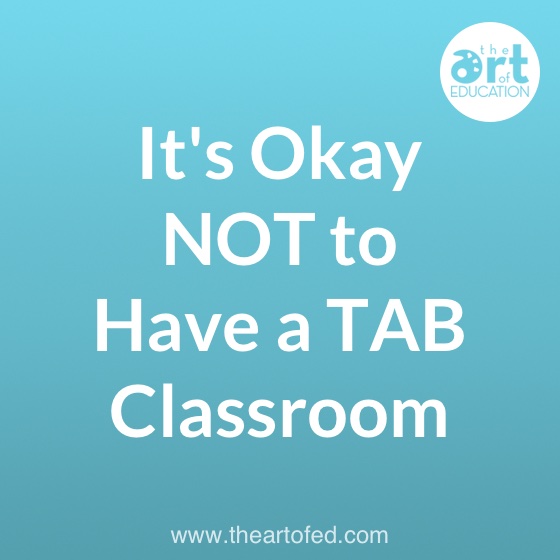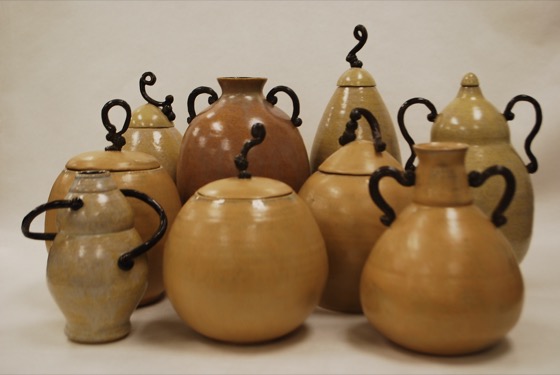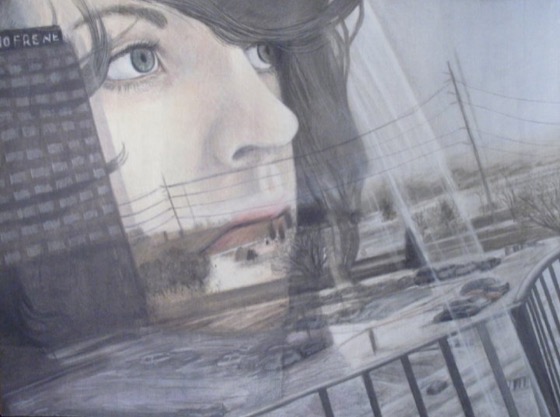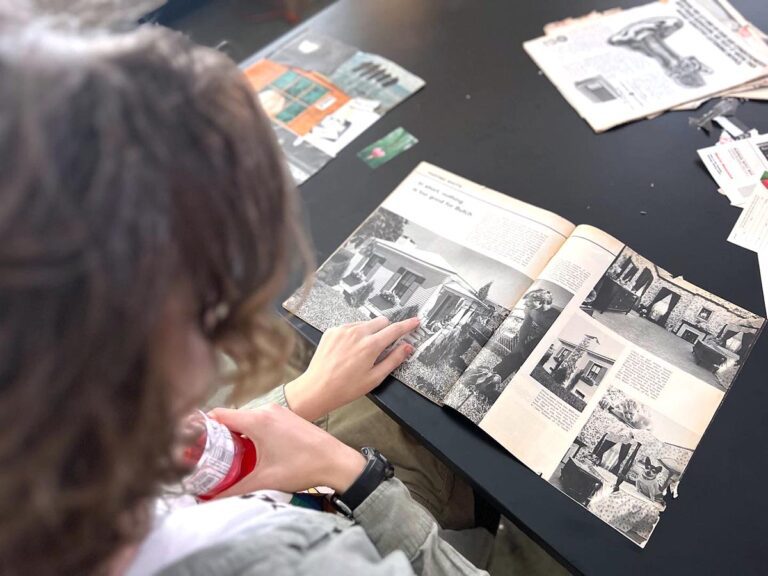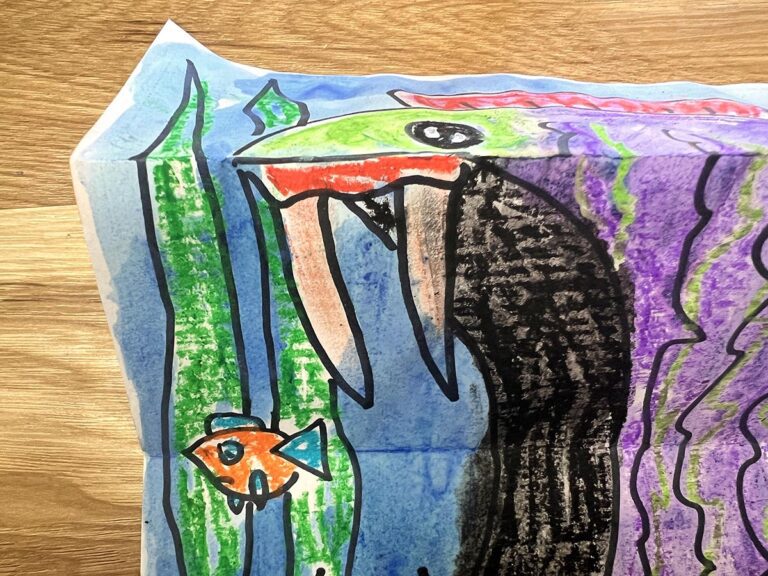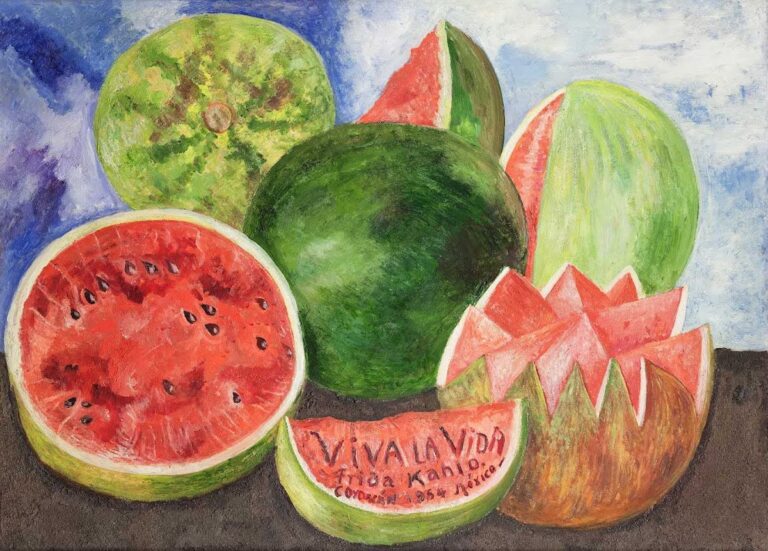Teaching for Artistic Behavior (TAB) seems to have become a groundswell in the world of art education, and it is beginning to feel like a tidal wave about to crash down on everyone involved. I love any teaching style that offers the agency, autonomy, and process that involves our students in the decision-making. TAB does some wonderful things, and I have respect for the concept, but at the high school level–in my classroom, specifically–I have made the decision that it’s not going to work for me. And I’m here to tell you that it’s okay for you to make that decision as well.
It’s okay NOT to have a TAB classroom.
I have seen SO MANY teachers this year post on social media something to the effect of, “I’m going full TAB, but I have no idea what I’m doing, please help!” Or more commonly, when people ask for help with various problems, others reply: “Switching to TAB will really help with this!” “Have you tried TAB?” “Students would do this better in a TAB environment!” If you’re spending time with other art teachers on social media, I wouldn’t blame you for having the impression that you are missing out on something really important if you don’t jump on board immediately.
Have we stopped to think that maybe the loudest voices in the room aren’t necessarily the wisest? There seems to be this strawman that exists about a community of evil teachers where every lesson has every kid’s work looking exactly the same. In all honesty, in all my years of teaching, I haven’t seen more than a handful of art teachers with this methodology. Yet we seem to be fighting it like it’s an epidemic. Can we just slow down? Can we maybe take into consideration the fact that there isn’t one end-all, be-all way to teach?
Can we just slow down? Can we maybe take into consideration the fact that there isn’t one end-all, be-all way to teach?
Or, can we take into account that there are different options where we can implement TAB or have modified choice, but it’s also okay if we continue to have a teacher-directed classroom? Here at AOE, we offer an entire class on choice-based options, because we realize that the level of choice in a classroom has to fit the teacher and his or her students. In fact, we even created a choice spectrum to help teachers figure out exactly where they fall. (If you’re interested in learning more, the next class runs in March.) Student autonomy is valuable, but so is teacher autonomy. You have to do what works best for you, your personality, and your teaching style.
Now, don’t get me wrong. I appreciate the idea of choice-based teaching, I have read just about every possible resource on choice-based art, and I offer a significant amount of choice in my classroom. I run what I would describe as a Montessori-influenced classroom, based on mutual respect and freedom within a structured environment (and, as a quick aside: please, everyone, realize that TAB is not “new”–it has been around for decades, and Maria Montessori developed ideas about student choice over 100 years ago). I cannot accomplish what I want to accomplish in my classroom, however, with full student choice.
These are the limitations I see with a classroom run in this way.
Lack of Expectations
I will be honest here: I’m not sure what the expectations are when the classroom is set up for choice-based art. I understand the idea of themes, and concepts, and mini-lessons, but with that being said, everything still seems so vague, and open-ended, and I’m not even sure about the kind of standards to which students are held. If kids are developing skill sets of their choosing, how do we keep them from avoiding that which challenges them? What incentive do they really have to step outside of their comfort zones? That’s when real learning occurs, and I don’t see a situation when a kid gets challenged if they don’t take it upon themselves. Not everyone is intrinsically motivated.
Yes, we want students to think creatively, use higher order thinking skills, reflect on their work, and solve problems, but they can do each of these things in ANY classroom. I’ve heard some argue that choice-based artmaking does these things “better” than a traditional classroom; if there’s anything other than anecdotal evidence supporting this idea, please share.
Lack of Interaction with the Teacher (and with Other Students)
For all of the studies and attention given to building relationships, classroom environments, and classroom communities, why is there such a rush to get kids working on their own things as quickly as possible every class period? There’s something to be said for someone with experience, someone with expertise, someone who knows a thing or two about pedagogy and anticipatory sets and engaging his or her students. Again, if we look at things pragmatically, why would we look to eliminate these skills in order to chase an ideal that prescribes 5-minute mini-lessons and individual work time? Classroom discussions, classroom critiques, and seminars are all worthwhile, and it seems counterintuitive to dismiss these out of hand because they may not be what an individual student chooses to do.
In addition, kids miss out on a certain type of interaction when they are working on 25 different projects. A good traditional lesson, even when teacher-directed, has multiple solutions and brings about a great amount of creative thinking. Along those same lines, kids can commiserate about those really difficult projects–the ones that take 50 or 60 hours of work to be successful. That shared experience creates shared moments, and those moments make being in the art room special. The knowing look that comes from a senior, the one that tells a sophomore “I’ve been there.” The compliments that mean so much more from someone who has done a similar project before. The shared joy that comes with doing that work and achieving that success. Together. Those moments are just not the same when your class is in 25 different places at once.
Overreliance on Online Resources
“Okay, kids, get to your Pinterest boards! Pull up your YouTube tutorials for the day! Go get on Instagram!” Is that really how we want to teach? Is that really teaching at all? Yes, we want students to be able to find source material, but are semi-guided Internet searches and cliche social media posts really the best solutions? Talk to your students face-to-face! Help them develop their skills and help them develop their ideas! The passion you have for artmaking and artistic influences cannot be passed on to your kids if they’re busy staring at a screen.
Why are we having kids go elsewhere for their instruction? Why are we outsourcing our inspiration to the Internet? What happened to creating that inspiration on your own? Kids can develop ideas from their memory. Kids can work from observation. Kids can create with their imaginations. Students should not take ideas and images from the Internet, make superficial changes, and call them their own. Their ideas, and their art, will be better when they are able to come up with creative thoughts and inspiration themselves.
The reason I want my students to be able to develop their own concepts and ideas is because copying images, in my world, is never okay. Feel free to throw Picasso quotes and Austin Kleon TED talks at me, but I’m not buying the argument. Copying an image from an online source, changing nothing but the medium? Now it’s “transformed”? Any gallery, college admissions officer, portfolio reviewer, or art show judge would dismiss that work immediately, so I’m not sure why we want our students working in that way. If we truly want our students to develop as artists, this methodology is doing no one any favors.
Kids Make Terrible Decisions
Whether in life or art, our kids have some work to do when it comes to making good decisions. Their brains just aren’t ready for it yet. When students have a great deal of freedom in their decisions regarding artmaking, it’s far too easy for them to revert to cliches with subject matter and stereotypical drawing solutions and far too easy for them to slip back into drawing stages which we know they are beyond. Yet, if we push them to change subject matter or change their drawing style, the argument surfaces that their artwork has lost its “authenticity”. I’m too pragmatic for that line of thinking; I don’t want my students’ work to be less than it could be because I’m chasing an ideal.
Quality of Work
Speaking of student work, let’s be honest–much of the work coming out of TAB classrooms just isn’t that strong. Choice-based teachers might argue that we should not sacrifice process in order to focus on the product. I would argue that we should not do the opposite, either. When my kids are putting together portfolios for art school, competing for scholarships, etc., It’s tough to justify a process-based classroom when it would basically eliminate my students’ chances to reach these goals. And when I am held accountable by a university for my students’ work because of dual enrollment grading, process sketches and pictures of us playing with clay aren’t going to get me very far. In short: my students NEED to create quality work because of the demands of my class, and I know better than they do what constitutes quality work. This is where guidance and direction from a teacher plays a vitally important role.
Yes, I care about process. But I care about product as well. I refuse to sacrifice one for the other, and I think my classroom is better because of it.
Yes, I care about process. But I care about product as well. I refuse to sacrifice one for the other, and I think my classroom is better because of it. My students’ work is better because of it. Is it conceited for me to say that the work my students produce is better than anything I have seen coming from a choice-based classroom? Probably. But it’s not wrong.
My kids talk, my kids think, my kids make great art. My kids are artists, and successful ones at that. I scaffold, I differentiate, I challenge, and I support autonomy, all within the ‘confines’ of a teacher-directed classroom. The students in my room form both a community and an art program, and as it evolves from year to year, my kids know that they are part of something bigger than themselves.
What I do–what we all do–can be called a lot of different things. I would simply call it what good teachers do. And I see no reason to change.
Let us know, how do you feel about Choice-Based Art Education?
Where do you fall on the spectrum? What works for you in your classroom?
For an alternate perspective, be sure to check out The Top 5 Myths About Choice-Based Art Education.
Magazine articles and podcasts are opinions of professional education contributors and do not necessarily represent the position of the Art of Education University (AOEU) or its academic offerings. Contributors use terms in the way they are most often talked about in the scope of their educational experiences.
